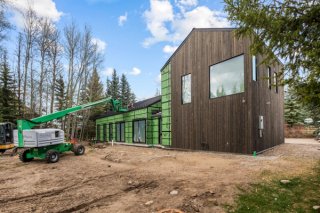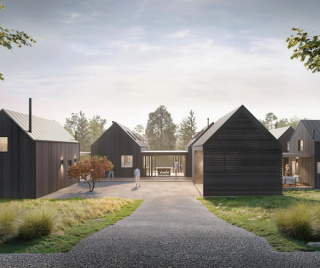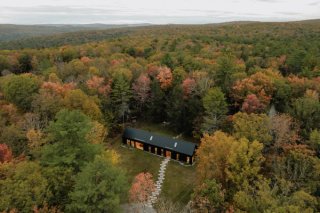How HUTS Gets Accessible New Homes Built in High Cost Markets

Places like Sun Valley and Martha’s Vineyard come with a built-in mythology. The story is that building a new home there is only for clients with blank checks. Realtors reinforce it. Designers reinforce it. Builders and homeowners reinforce it. Everyone has a reason to keep the narrative alive.

But here is what we see at HUTS. Most of the materials that go into a home are the same across the country. Lumber, insulation, windows, drywall. Labor pricing will always vary, but not at a level that turns a $450 per SF home into a $1500 per SF home. What actually drives that jump is the ecosystem around the project. In many of these markets, you are paying for the GC’s expensive Main Street office, their office staff, their fleet of trucks, and the carry costs on the large custom projects they are juggling. You are paying for a long chain of subcontracting, scheduling bottlenecks, markups on every finish and fixture, and a client environment that is often slow, demanding, and litigious. The system, not the house, inflates the cost.

We are not against general contractors. HUTS works closely with great GCs all over the country and we respect the complexity of what they do. Our job is to structure a project in a way that sets everyone up for success, keeps risk manageable, and makes the numbers work for both the builder and the owner. In high cost markets, that means using a different playbook. Here are three separate strategies we use to bring costs back down to earth.
1. We expand the builder pool. Instead of relying on the most visible GC in town, with the $30,000 a month office on Main Street and a marketing budget that ends up in your contract, we look for small, low overhead builders who live an hour or more outside the market. They are highly skilled, eager to break into premium areas, and able to price work competitively.
2. We simplify and redistribute scope. We reduce the operational load on any single GC by working with local concrete and MEP trades, outsourcing the shell to panelization partners, and making finishes and fixtures owner supplied. This limits cascading markup.
3. We pay attention to the psychology of the market. Contractors in these destinations spent years chasing the $25 million and $50 million homes. The promise was big margins and prestige. The reality has often been slow timelines, demanding clients, litigation risk, and profit that evaporates through unpaid change orders. Many feel trapped on projects that never end.
A normal scale HUTS project feels different. It is well defined, tightly scoped, and built to move. For a lot of builders, the math is simple. Five HUTS projects that each take a year and generate roughly $250,000 in contractor fees create a stable, predictable business. One $25 million home that drags on for six years with a shrinking bottom line does not.
None of this is magic. It is about understanding how expensive markets function, identifying the pressure points, and designing a construction approach that resets the incentives for everyone involved.
That is how HUTS gets accessible new homes built in places that are supposed to be inaccessible.


